Main menu
Common skin conditions

NEWS
Join DermNet PRO
Read more
Quick links
Author: Dr Jenny Chung, House Officer, Auckland City Hospital, Auckland, New Zealand; Chief Editor: Dr Amanda Oakley, Dermatologist, Hamilton, New Zealand, August 2016.
Liver cirrhosis
Nutritional and metabolic disorders
Inflammatory bowel disease
Vascular disorders
Bowel-associated dermatosis-arthritis syndrome
Hereditary gastrointestinal tumours
Paraneoplastic syndromes associated with gastrointestinal malignancies
Dermatological symptoms and signs sometimes precede or accompany a gastrointestinal disease. It should be noted that the embryonic origin of the gastrointestinal tract and the skin are closely aligned.
Common cutaneous manifestations of liver cirrhosis include:
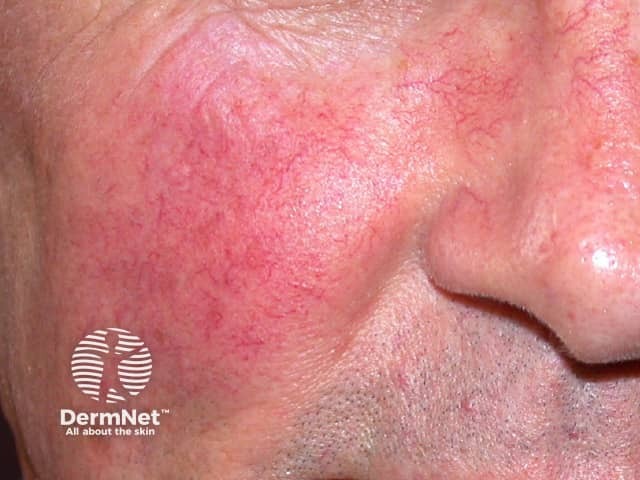
Facial redness
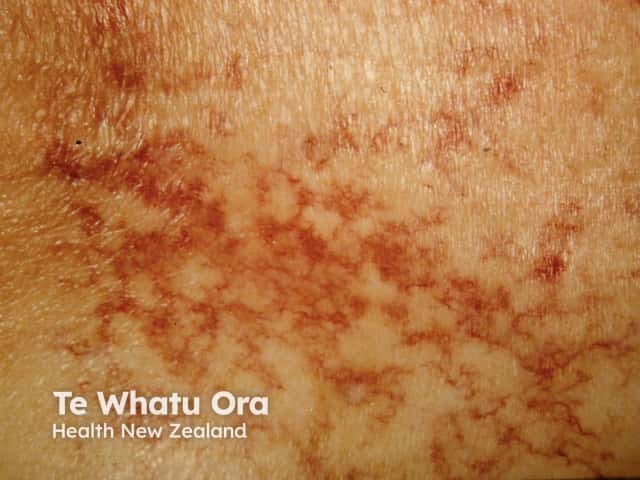
Telangiectasia
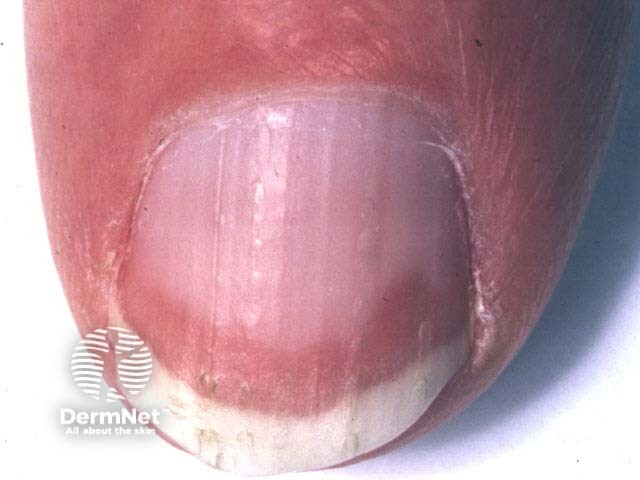
Terry nail
Malnutrition associated with deficiencies of fat-soluble and water-soluble vitamins often affects the skin.
Fat-soluble vitamins:
Water-soluble vitamins:
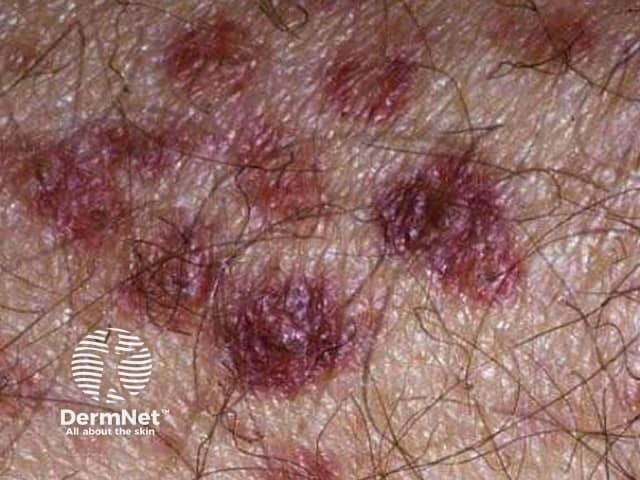
Scurvy

Pellagra
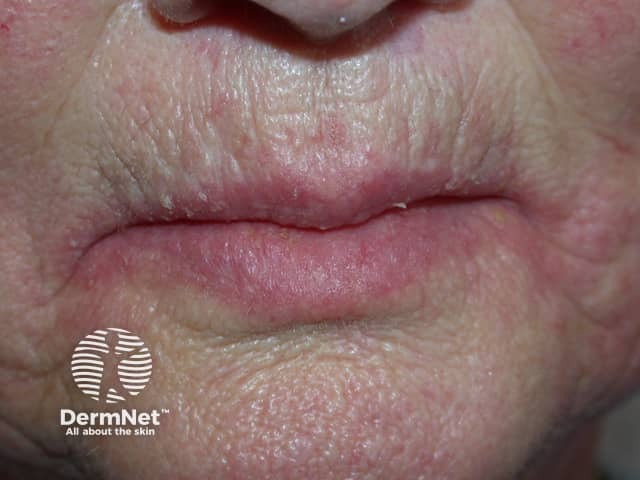
Angular cheilitis
Acrodermatitis enteropathica is an autosomal recessive inherited form of zinc deficiency that manifests in infancy. It presents with the clinical triad of dermatitis, alopecia and diarrhoea. Skin signs include:
See also Acrodermatitis enteropathica-like conditions.
Eruptive xanthomas are:
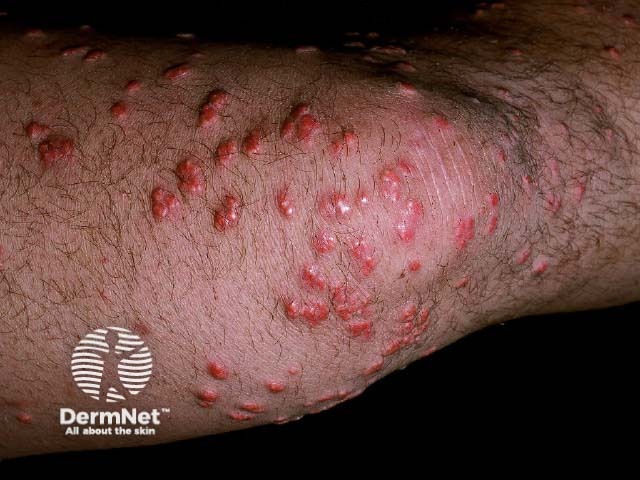
Eruptive xanthoma
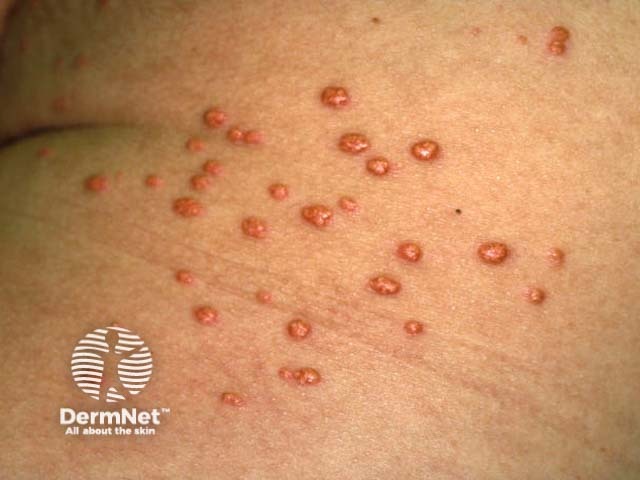
Eruptive xanthoma

Eruptive xanthoma
Dermatitis herpetiformis is associated with:
Skin signs of dermatitis herpetiformis include:

Dermatitis herpetiformis
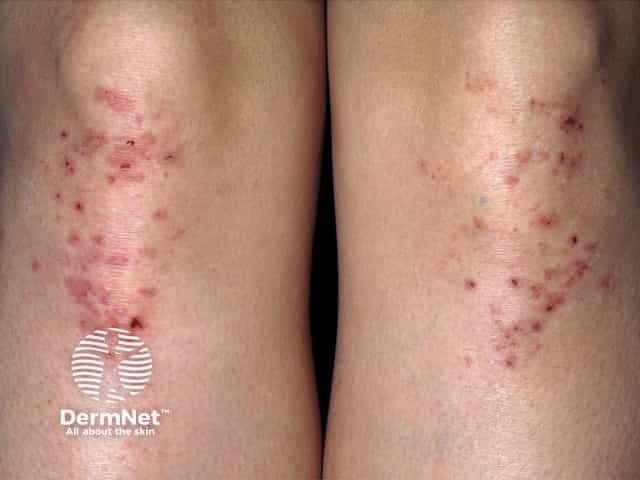
Dermatitis herpetiformis
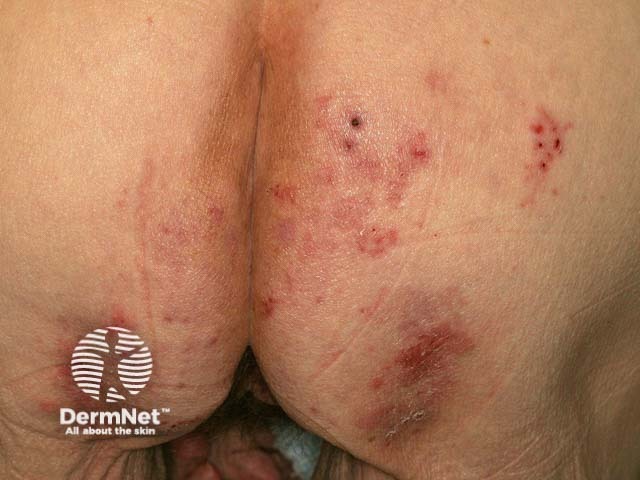
Dermatitis herpetiformis
Inflammatory bowel disease (IBD) refers to ulcerative colitis and Crohn disease. There are similarities and differences in their cutaneous manifestations.
Aphthous ulcers are common in both forms of inflammatory bowel disease.

Aphthous ulceration
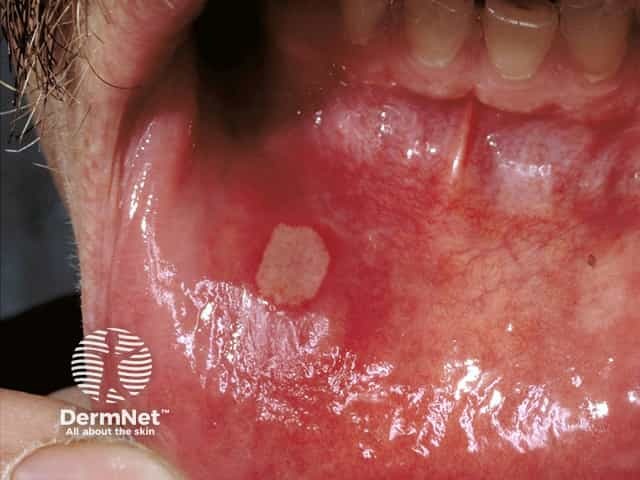
Aphthous ulceration
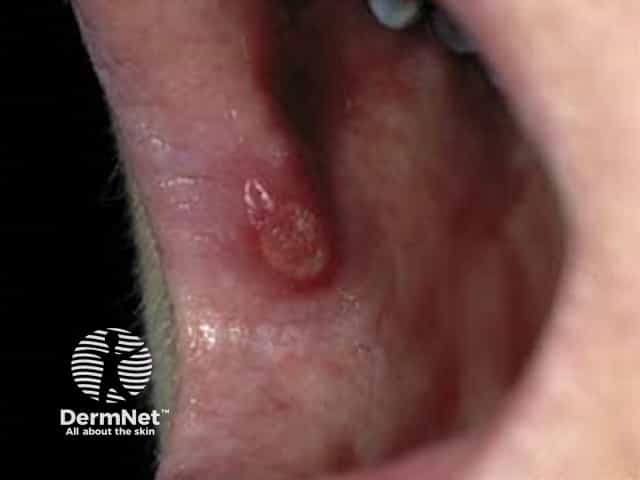
Aphthous ulceration
Erythema nodosum (EN) is the most common skin sign of Crohn disease (4-6%) or ulcerative colitis (3%).

Erythema nodosum
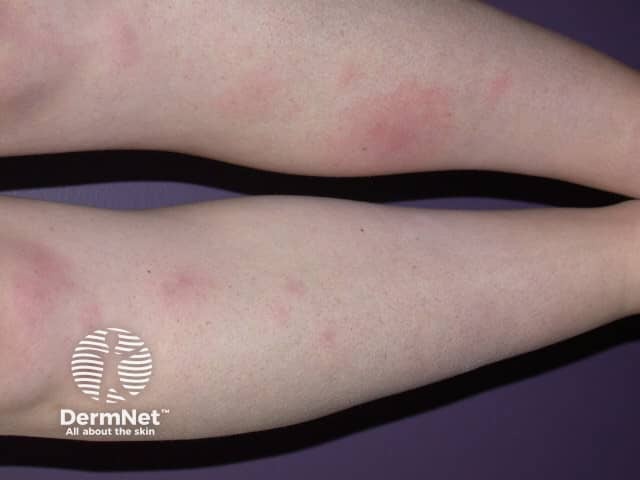
Erythema nodosum
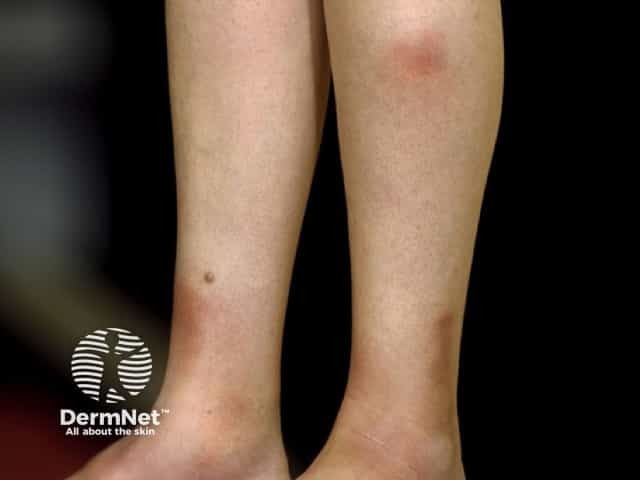
Erythema nodosum
Pyoderma gangrenosum (PG) affects 0.7% of patients with Crohn disease and 2% with ulcerative colitis.
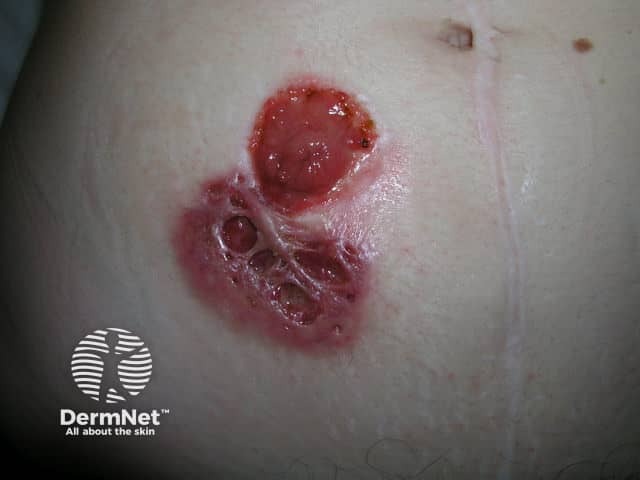
Pyoderma gangrenosum
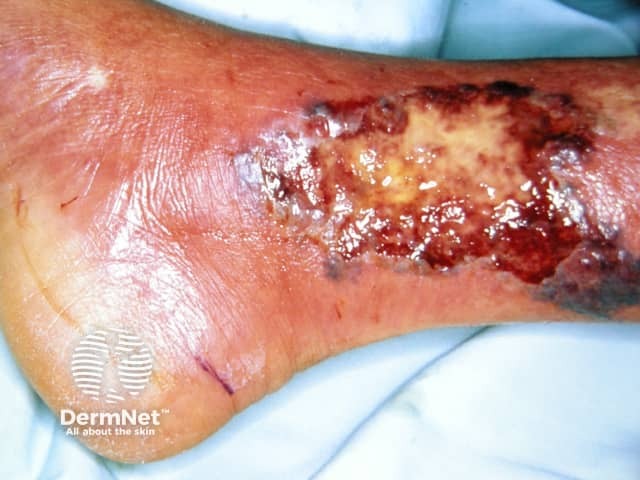
Pyoderma gangrenosum

Pyoderma gangrenosum
Fissures and fistulae are common in Crohn disease (36%) and do not occur in ulcerative colitis.
Mucosal oedema affects 8–9% of patients with Crohn disease and is absent in ulcerative colitis.
Metastatic Crohn disease may cause cutaneous granulomatous plaques, nodules and ulcers.
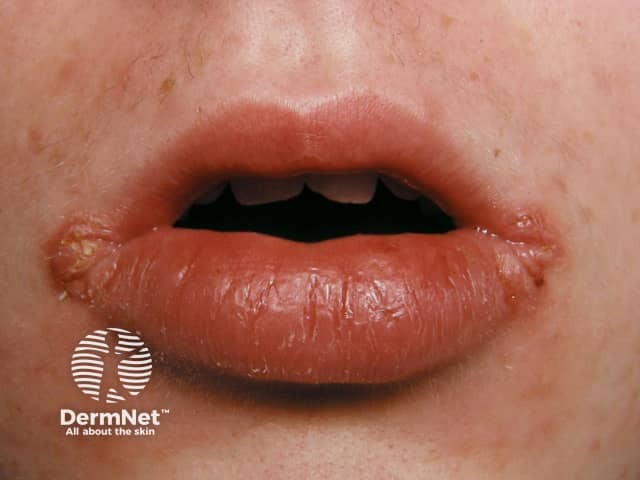
Angular cheilitis
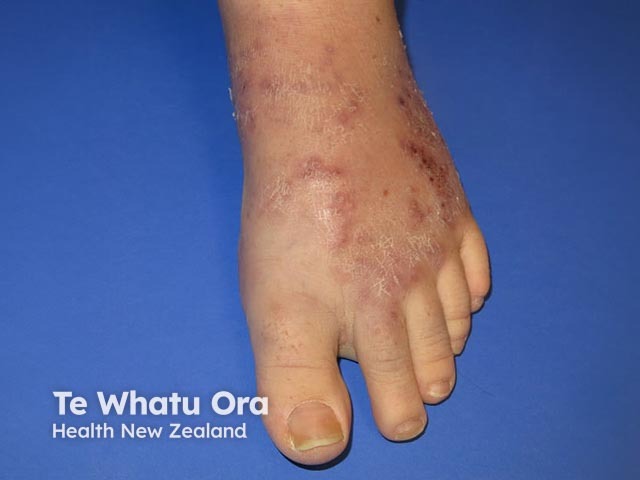
Metastatic Crohn disease
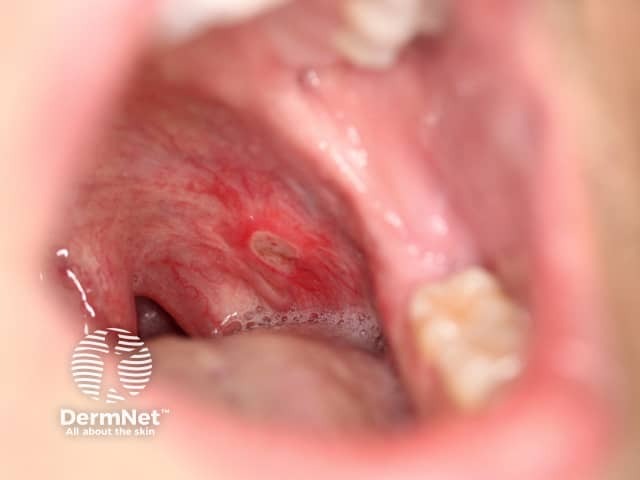
Aphthous ulceration
Epidermolysis bullosa acquisita (EBA) is a rare immunobullous disorder sometimes associated with Crohn disease.
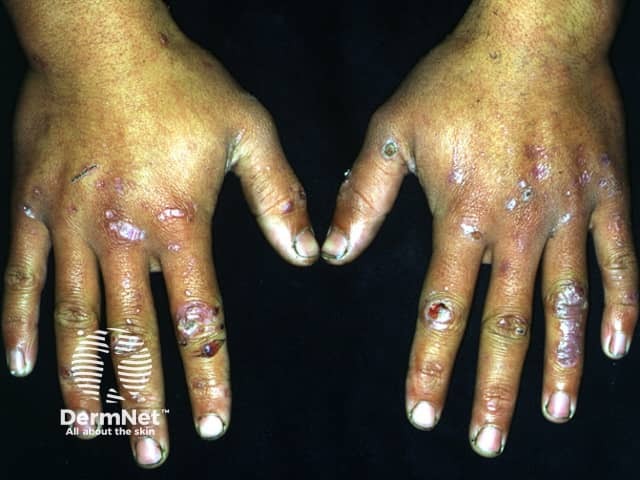
Epidermolysis bullosa acquisita
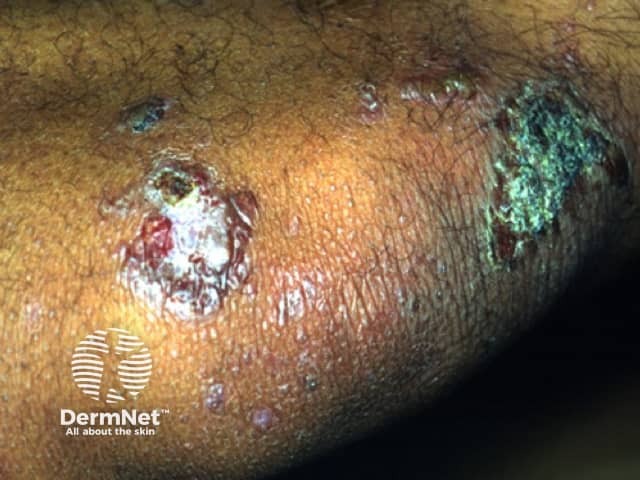
Epidermolysis bullosa acquisita
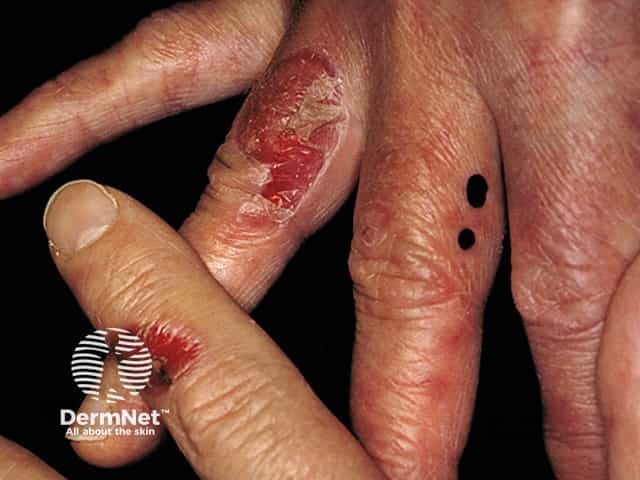
Epidermolysis bullosa acquisita
Cutaneous polyarteritis nodosa is a rare form of necrotising, small and medium-sized vasculitis.
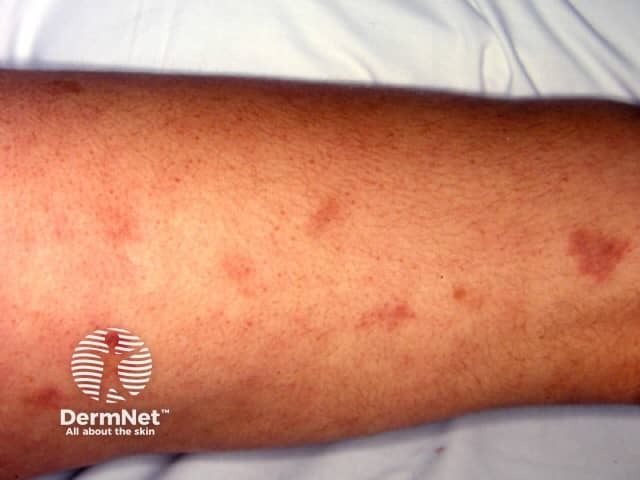
Cutaneous polyarteritis nodosa

Cutaneous polyarteritis nodosa
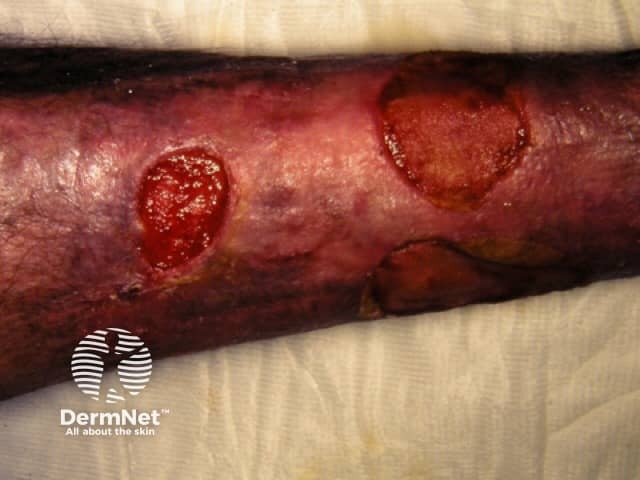
Cutaneous polyarteritis nodosa
Acute neutrophilic dermatosis, also known as Sweet syndrome, is an autoinflammatory disorder sometimes associated with inflammatory bowel disease. Features include:
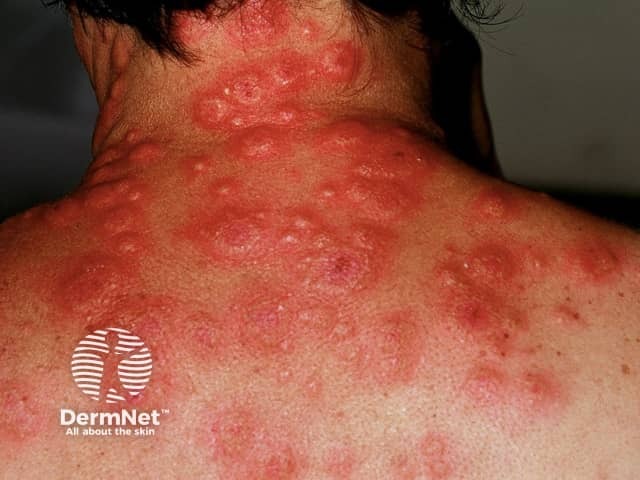
Sweet syndrome
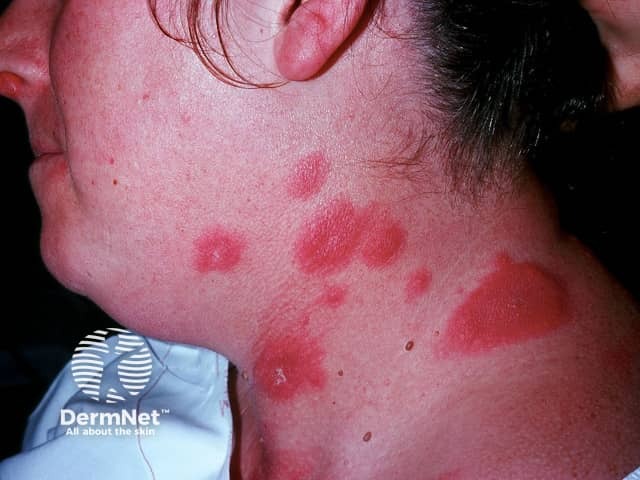
Sweet syndrome
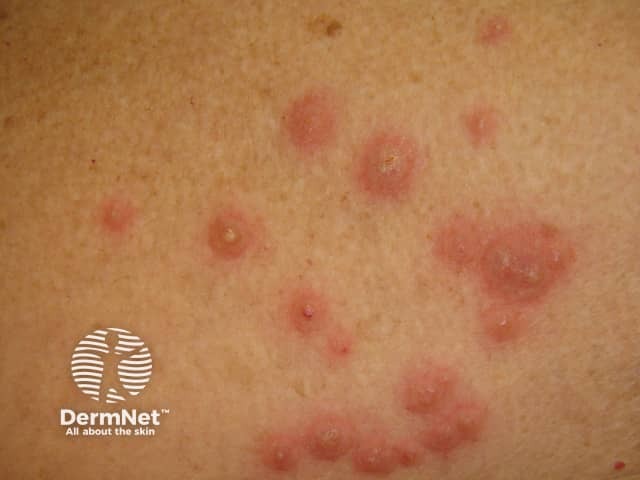
Sweet syndrome
Henoch-Schönlein purpura (HSP) is an immunoglobulin A-mediated, leukocytoclastic, small-vessel vasculitis.
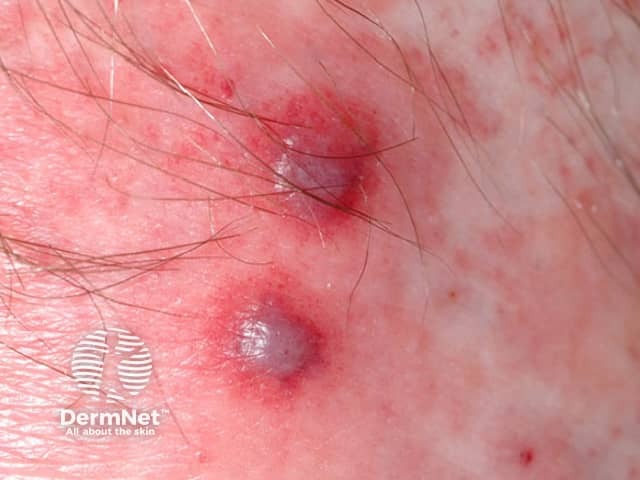
Henoch Schönlein purpura
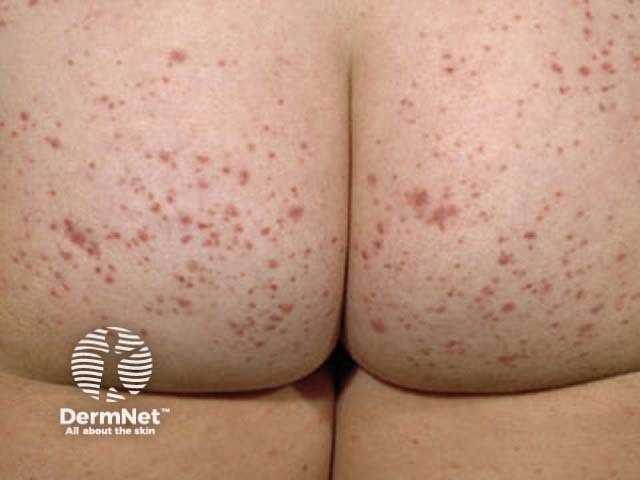
Henoch Schönlein purpura

Henoch Schönlein purpura
Degos disease is small vessel angiopathy, thought to be due to dysregulation of interferon-alfa and the membranolytic attack complex. There are two variants: benign atrophic papulosis and malignant atrophic papulosis.
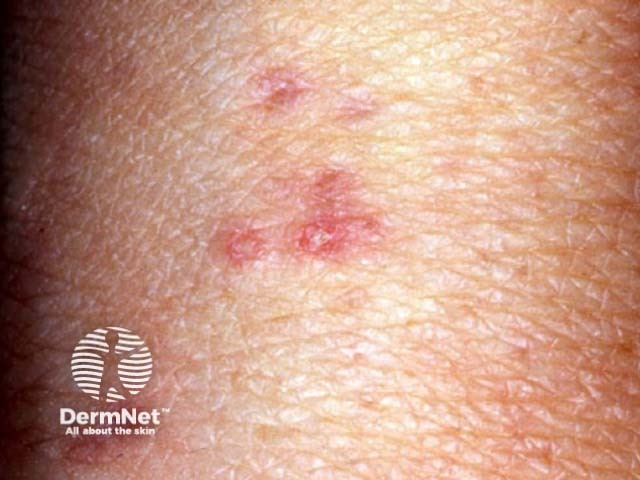
Degos disease
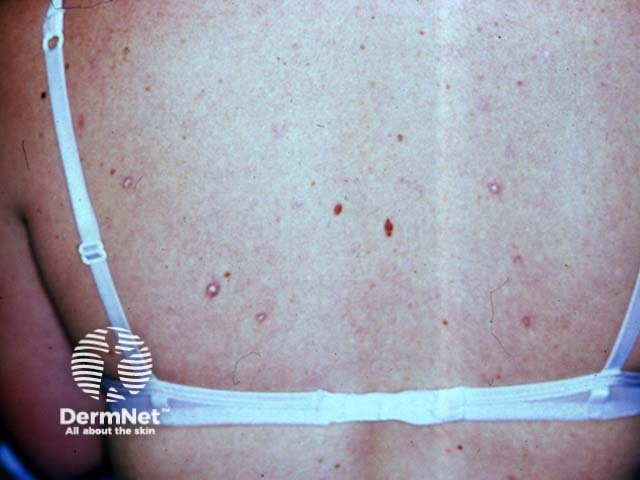
Degos disease
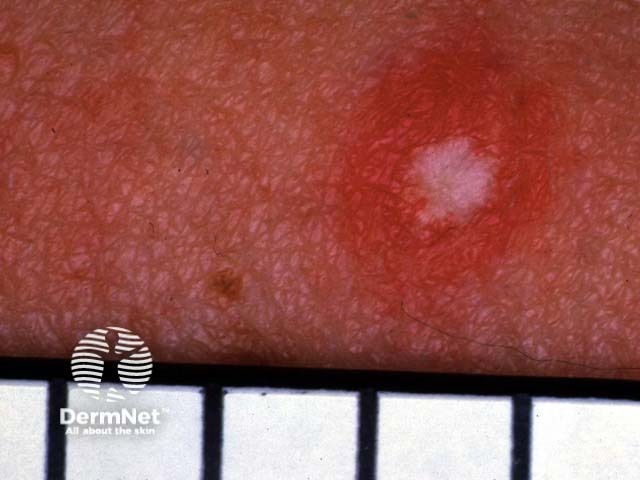
Degos disease
Hereditary haemorrhagic telangiectasia (HHT) is a hereditary, autosomal dominant, bleeding disorder.
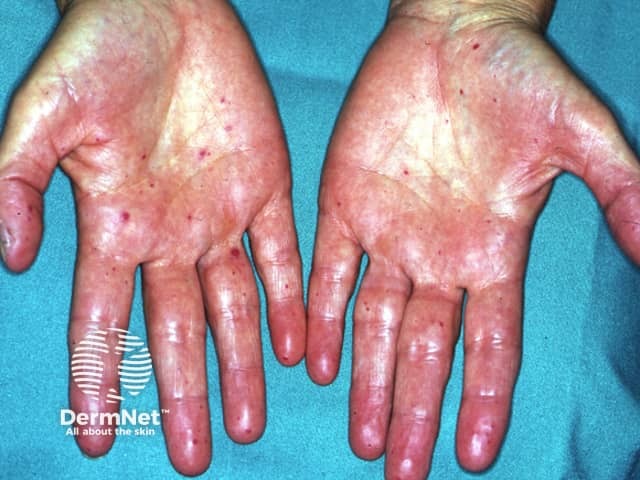
Hereditary haemorrhagic telangiectasia
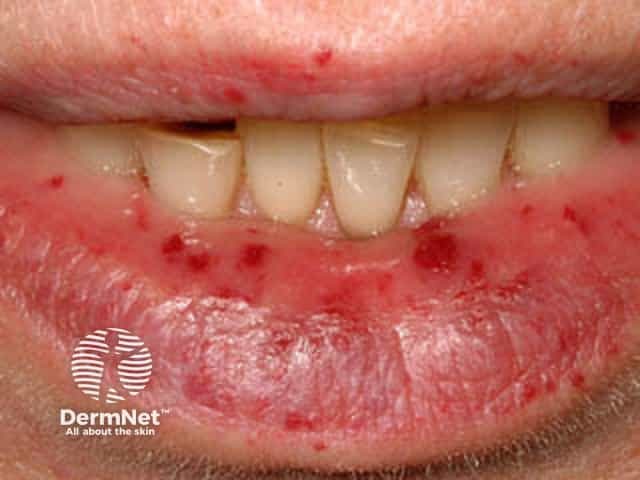
Hereditary haemorrhagic telangiectasia
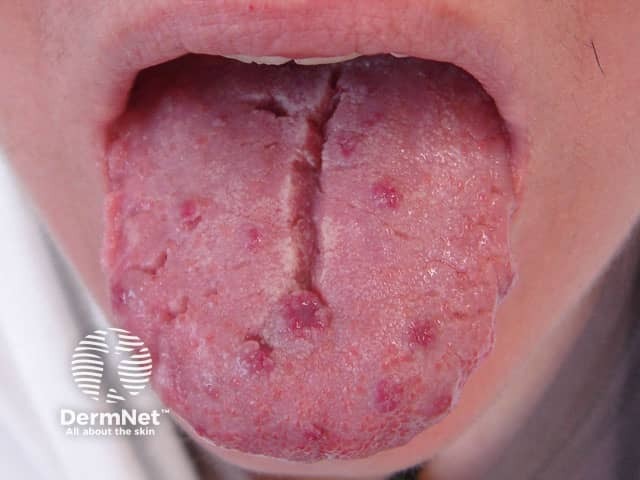
Hereditary haemorrhagic telangiectasia
Kaposi sarcoma (KS) is a human herpesvirus 8-associated tumour of endothelial cells.
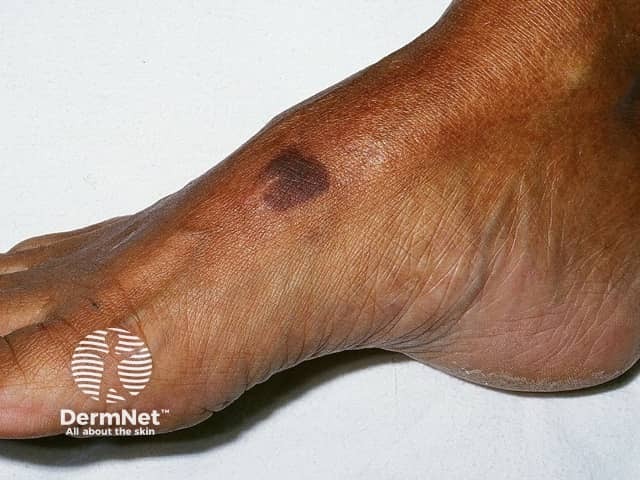
Plaque stage
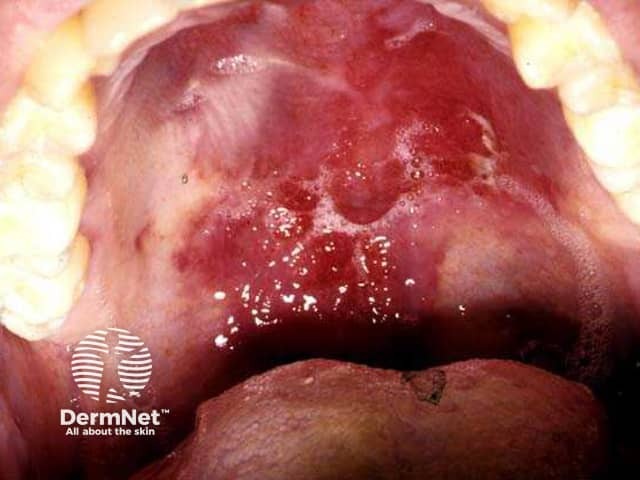
Kaposi sarcoma
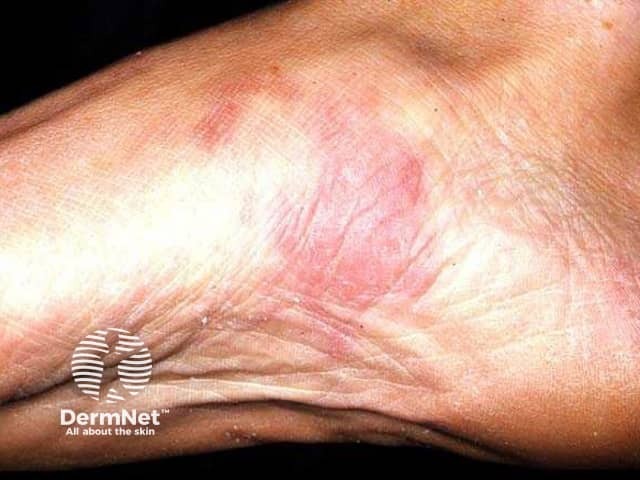
Patch stage
Blue rubber bleb naevi are venous malformations of skin and gastrointestinal tract.
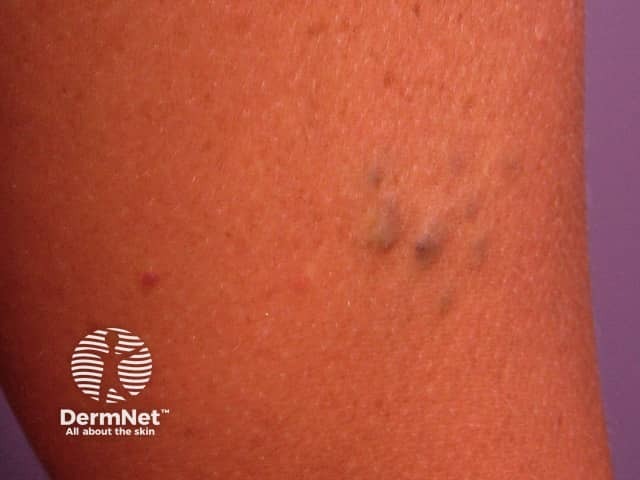
Blue rubber bleb naevus
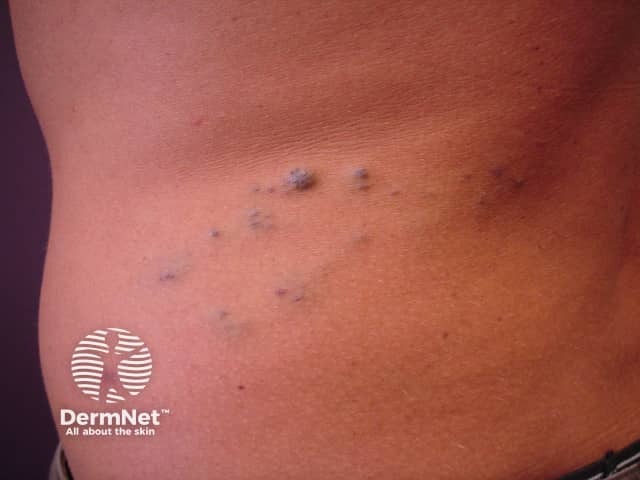
Blue rubber bleb naevus

Blue rubber bleb naevus
Pseudoxanthoma elasticum (PXE) is an inherited disease in which there are calcification and fragmentation of elastin fibres in the skin and internal organs.
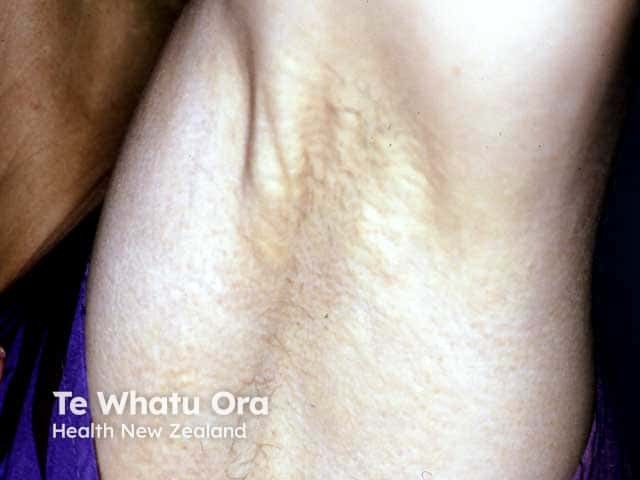
Cream coloured plaques of PXE in the axilla
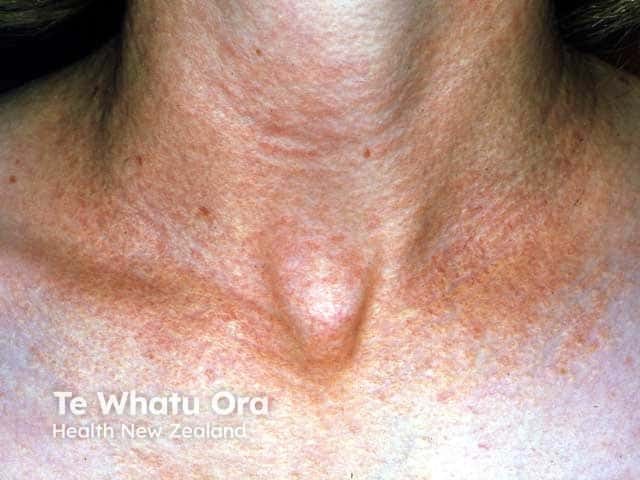
Yellow plaques of PXE on the neck
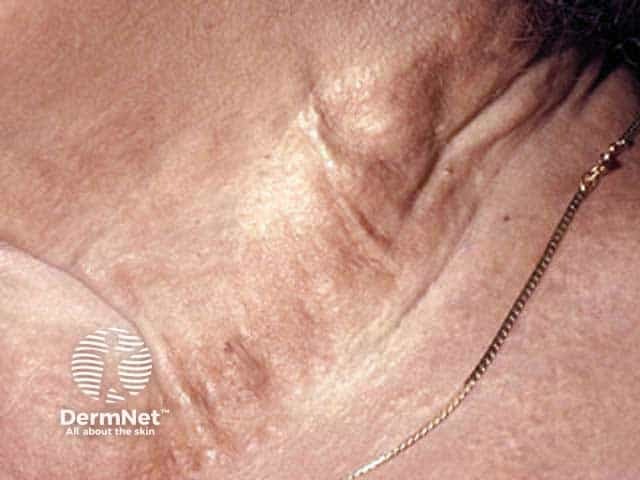
Lax yellow neck skin in longstanding PXE
Ehlers-Danlos syndrome (EDS) type IV is an inheritable connective tissue disease due to a defect in collagen synthesis.

Transparent skin

Bruises and scars
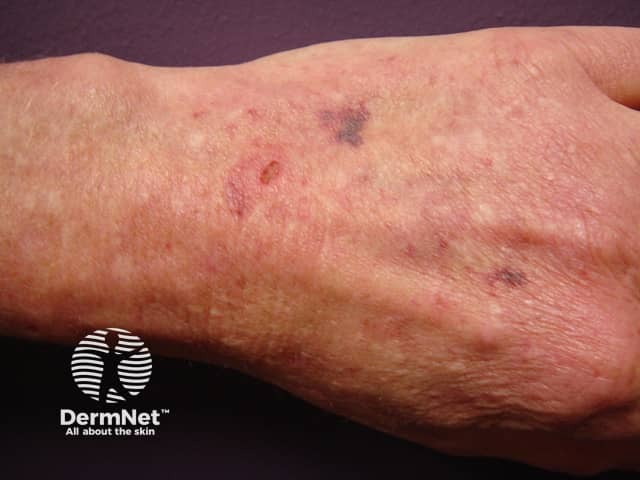
Skin fragility
Klippel–Trénaunay syndrome presents in infancy with a cutaneous capillary vascular malformation.
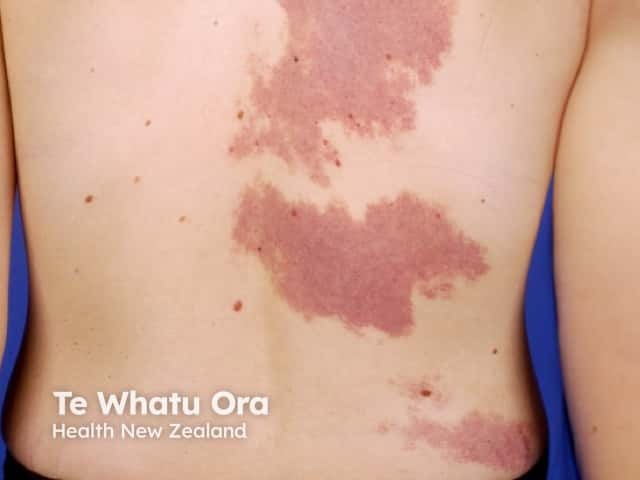
Port wine stain
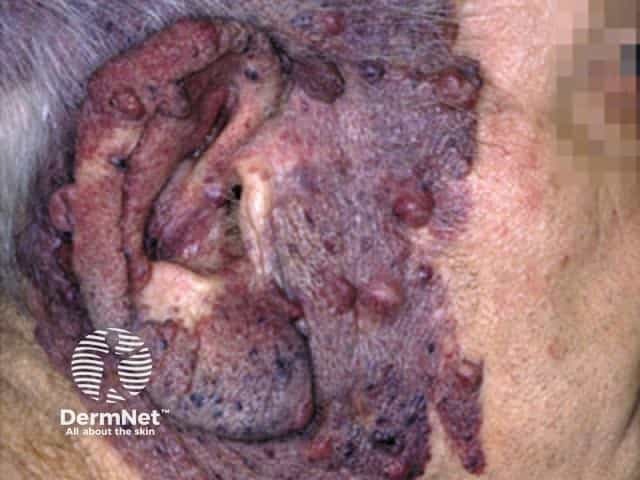
Port wine stain
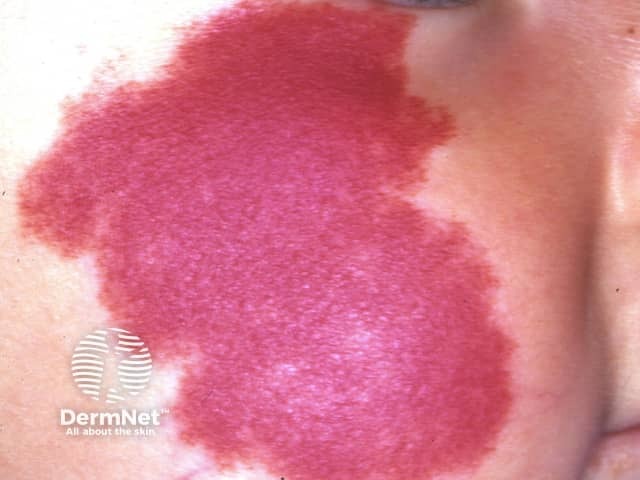
Port wine stain
Bowel-associated dermatosis-arthritis syndrome (BADAS, bowel bypass syndrome) presents with recurrent and episodic flu-like symptoms, polyarthralgia and cutaneous lesions.
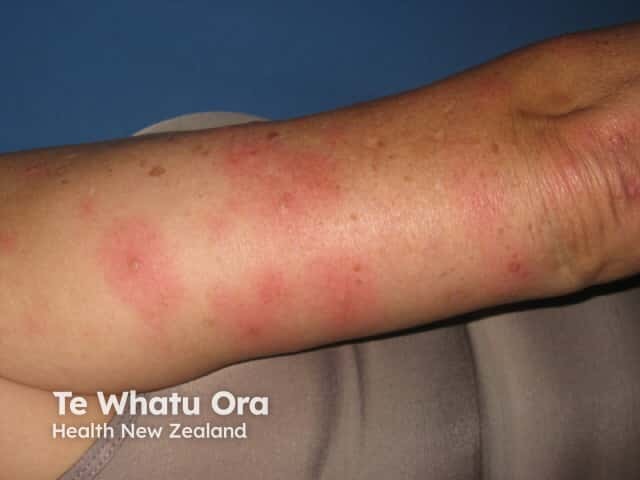
Skin rash due to bowel bypass syndrome
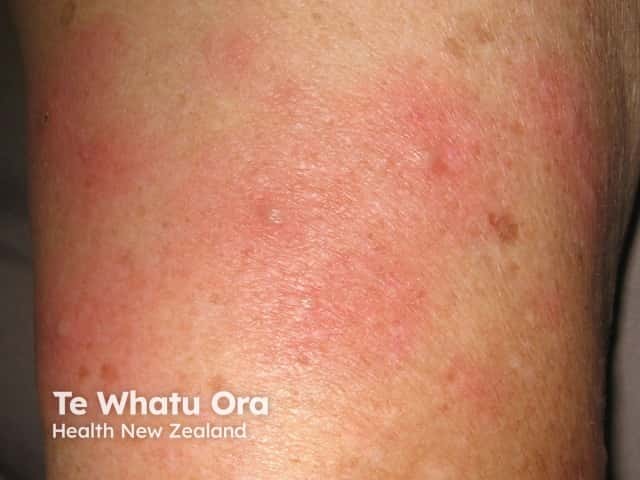
Skin rash due to bowel bypass syndrome

Skin rash due to bowel bypass syndrome
Hermansky-Pudlak syndrome is a form of tyrosine-positive oculocutaneous albinism with autosomal recessive inheritance.
Gardner syndrome is a variant of familial adenomatous polyposis with numerous adenomatous polyps and mucocutaneous findings, such as:

Epidermal cyst
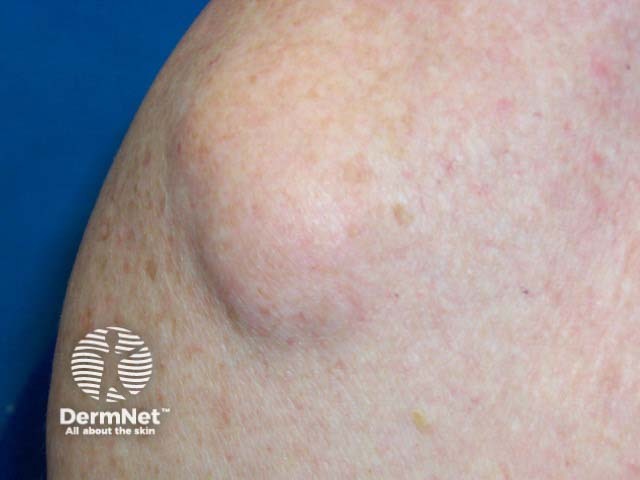
Lipoma
Hereditary nonpolyposis colorectal cancer, also known as Lynch syndrome, is the most common hereditary cancer.
Peutz-Jeghers syndrome is a hamartomatous polyposis syndrome with autosomal dominant inheritance.
Cowden syndrome, or multiple hamartoma syndrome, is characterised by skin lesions and polyposis coli.
Trichilemmomas are benign hamartomas of the outer sheath of hair follicles. They are:
Other skin lesions described in Cowden syndrome include:
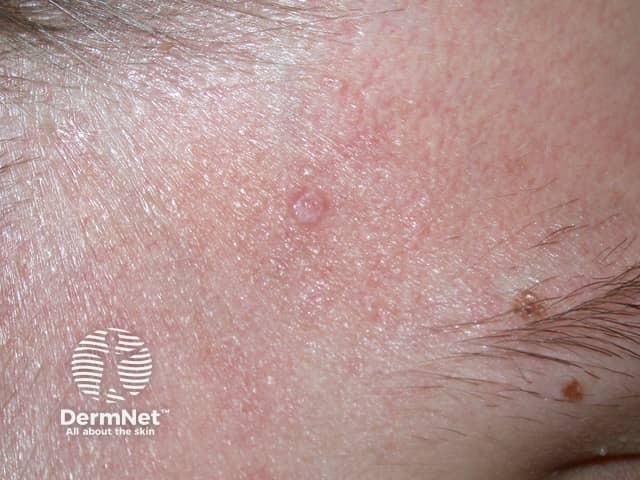
Facial papule

Acral keratoses

Close-up
The Bannayan-Riley-Ruvalcaba (BRR) syndrome is a rare germline mutation with hamartomatous polyposis, macrocephaly, and intellectual disability. Skin manifestations include:
Juvenile polyposis syndrome is a rare autosomal dominant disorder associated with hereditary haemorrhagic telangiectasia.
Neurofibromatosis is a common, autosomal dominant, a neurodermatosis characterised by:
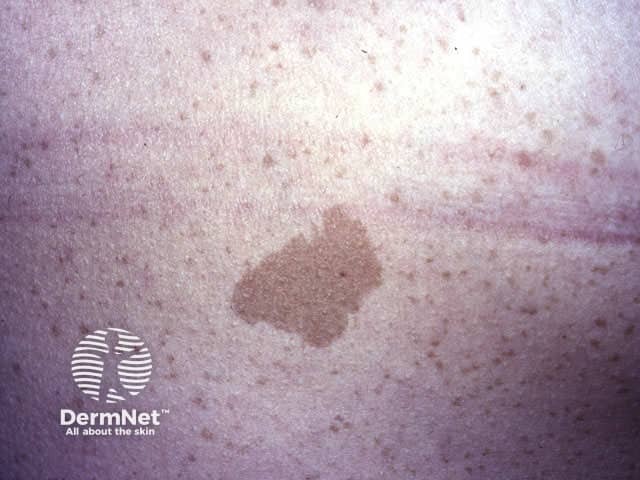
Café-au-lait macule
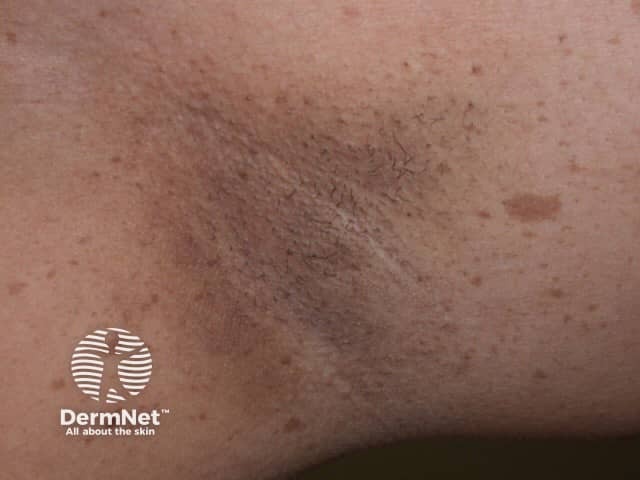
Freckling in the armpit

Neurofibroma
Cronkhite-Canada syndrome is a sporadic syndrome that affects older adults. It presents with:
Acanthosis nigricans is associated with insulin resistance.
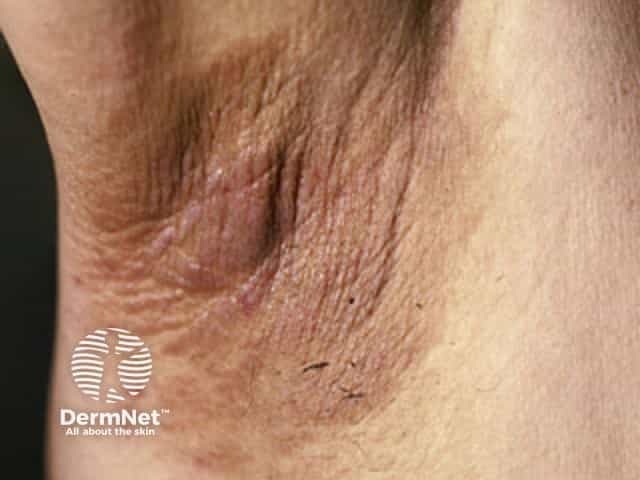
Acanthosis nigricans

Acanthosis nigricans
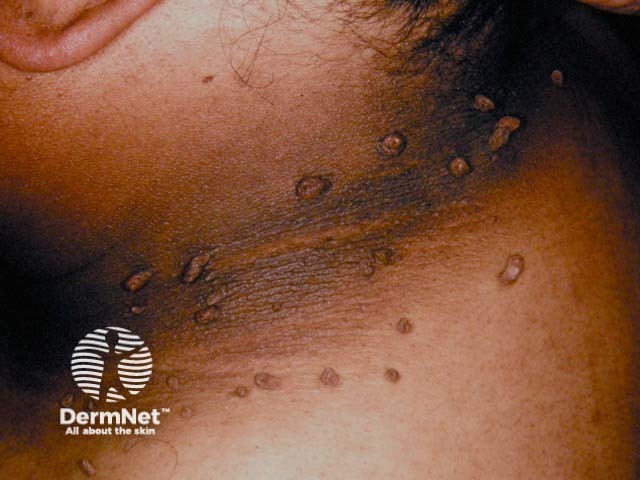
Acanthosis nigricans
Tripe palm is associated with malignant acanthosis nigricans.
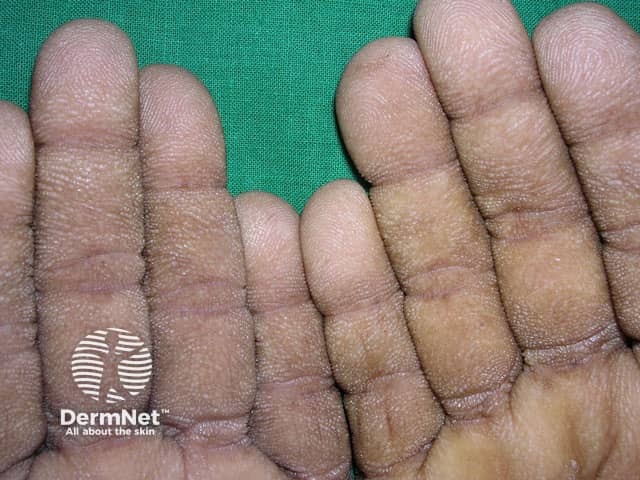
Tripe palms
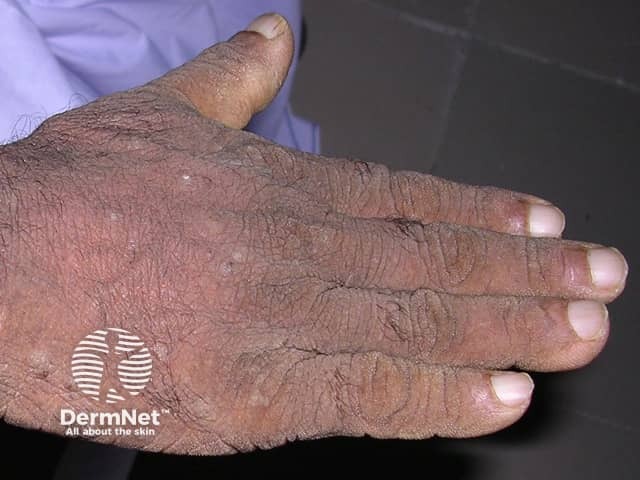
Acanthosis nigricans
The acute onset of multiple, eruptive seborrhoeic keratosis is known as the sign of Leser-Trélat.

Seborrhoeic keratosis
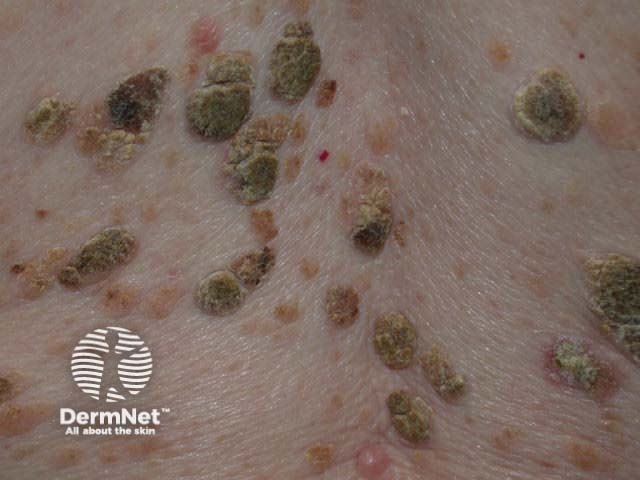
Seborrhoeic keratosis
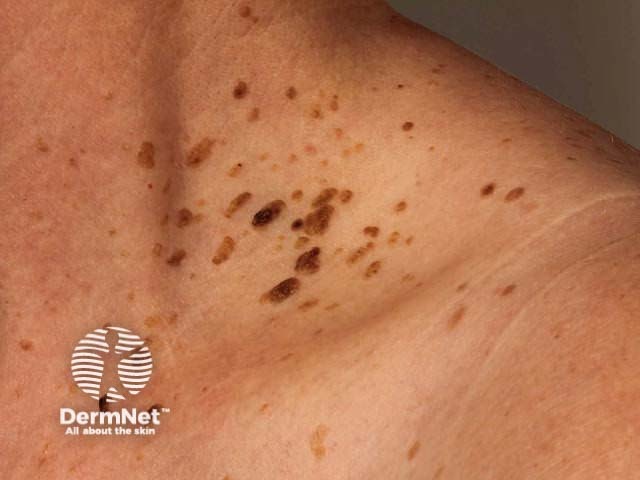
Seborrhoeic keratosis
Acrokeratosis neoplastica is also known as Bazex syndrome and is different from Bazex-Dupré-Christol syndrome associated with basal cell carcinomas.
Glucagonoma is a rare, glucagon-secreting, pancreatic, alpha cell tumour.
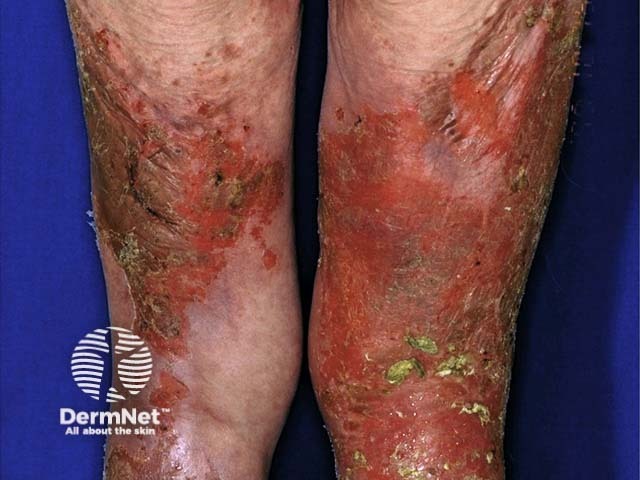
Necrolytic migratory erythema
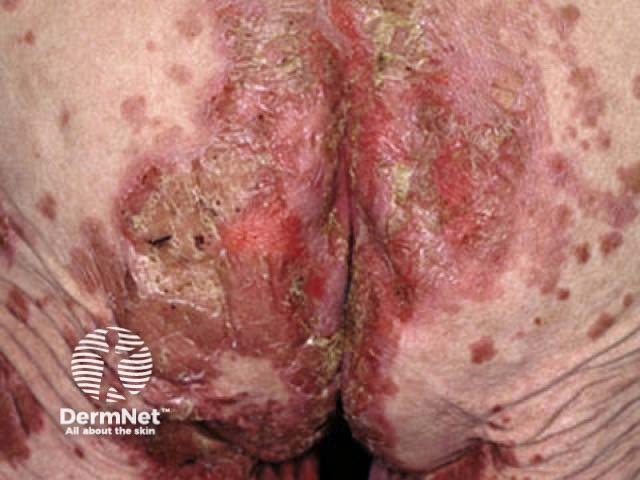
Necrolytic migratory erythema
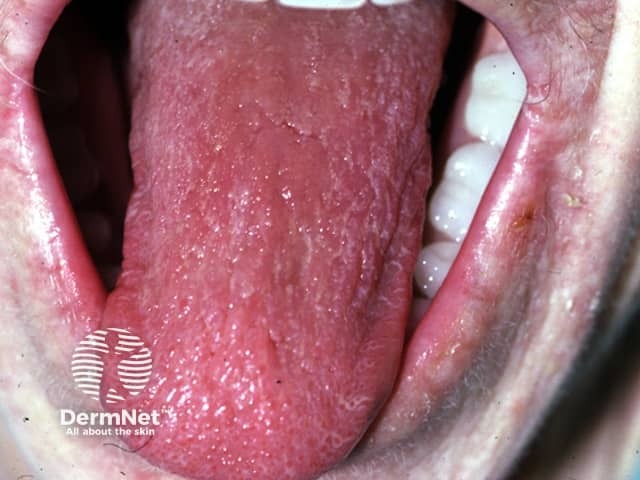
Necrolytic migratory erythema
Tylosis is an autosomal dominant form of focal, non-frictional and nonepidermolytic, palmoplantar keratoderma.

Focal palmoplantar keratoderma
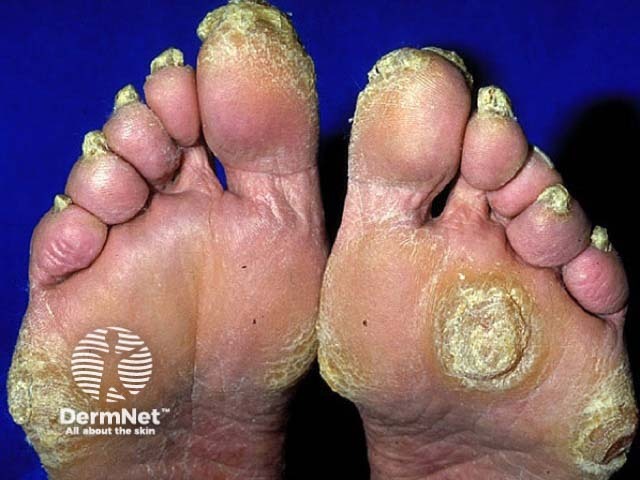
Focal palmoplantar keratoderma
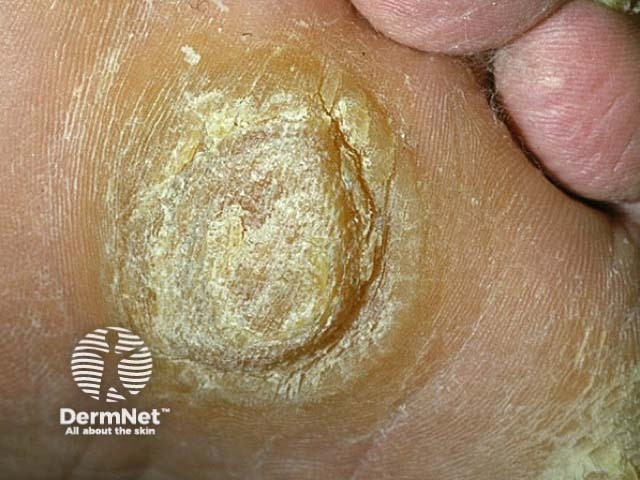
Focal palmoplantar keratoderma
Plummer-Vinson syndrome is a rare triad of dysphagia, iron deficiency anaemia and oesophageal webs.
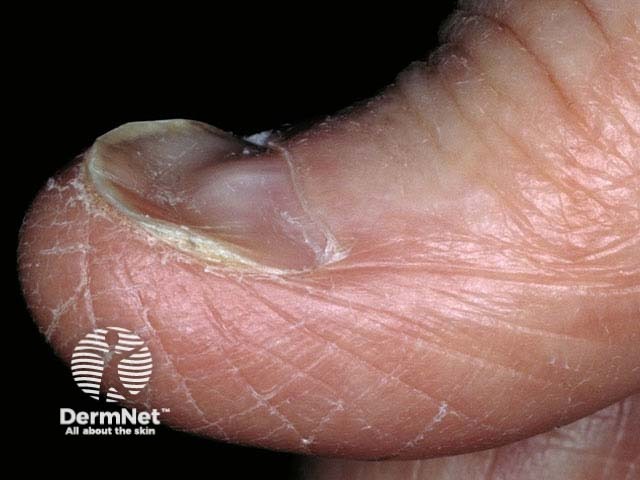
Koilonychia

Angular cheilitis
Extramammary Paget disease is an intraepithelial adenocarcinoma located in and around the anal verge, vulva, or male genitalia.
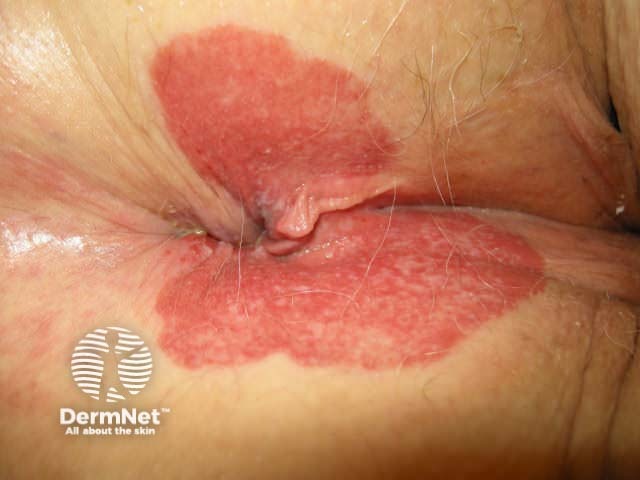
Extramammary Paget disease
Carcinoid syndrome is the association of intestinal carcinoid with hepatic metastases.
Dermatomyositis is classified as an autoimmune disease. In older adults with dermatomyositis, 15–50% have an underlying malignancy of the gastrointestinal tract, pancreas, lung, breast, or ovaries, or non-Hodgkin lymphoma.
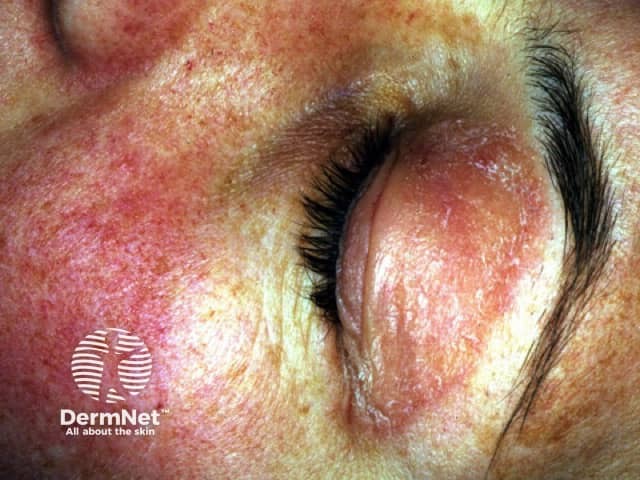
Heliotrope eyelids
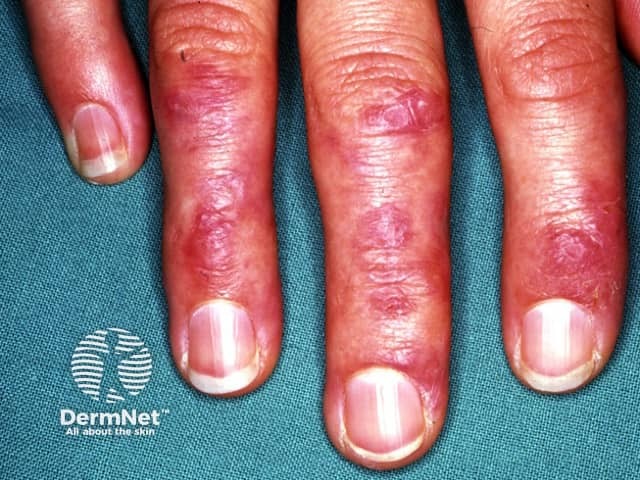
Gottron's papules
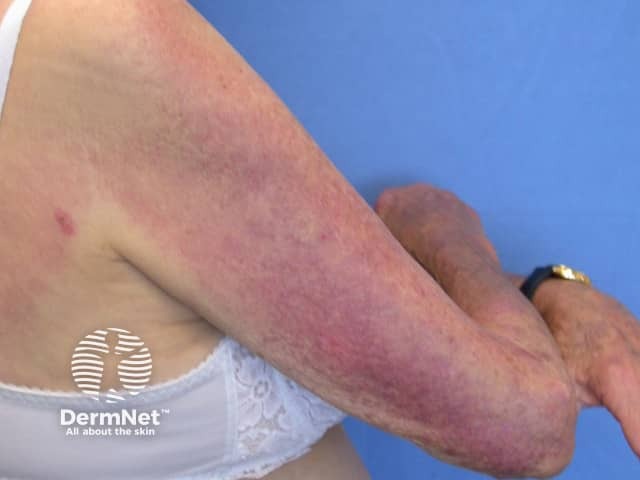
Dermatomyositis
Paraneoplastic pemphigus (PNP) is a rare acantholytic, mucocutaneous blistering disease.